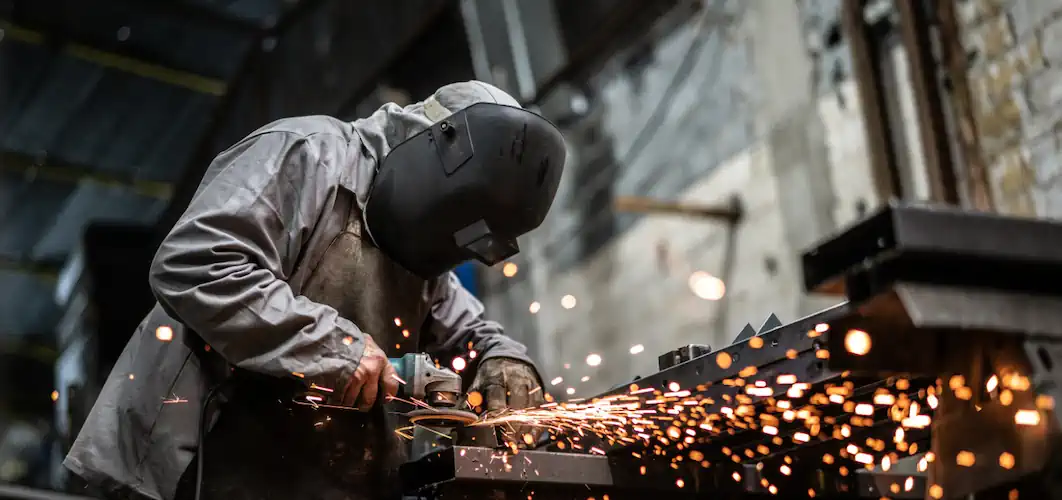Safety Gloves Certifications & Regulations
Safety gloves keep workers safe across numerous industries, whether healthcare, construction, manufacturing, or food handling. These gloves are a barrier against various hazards, such as chemicals, sharp objects, extreme temperatures, and biological risks. But with so many safety gloves available, how can you be sure you're choosing the right ones?
That’s where certifications and regulations come into play. They help ensure that the gloves you use meet specific safety standards. In this article, we'll explore the key certifications and regulations for safety gloves, helping you understand what to look for to protect yourself and your team.
Table of Contents
Importance Of Safety Gloves
Safety Standards And Regulations
Types Of Safety Gloves
Testing and Compliance
Ensure Worker Safety Through Proper Glove Usage

Importance Of Safety Gloves
Safety gloves offer essential hand protection against hazards, whether handling abrasive materials, working with sharp tools, or facing cuts and bruises. Imagine the comfort of knowing your hands are shielded from potential dangers, allowing you to focus on the task at hand without fear.
Safety gloves empower workers by providing a secure grip and dexterity, enabling them to perform their jobs efficiently and confidently. So, whether it's sorting tools in the yard or working in a high-risk construction zone
, choosing the right gloves can make all the difference in keeping your hands safe and your work effective.Safety Standards And Regulations
Understanding the various safety standards and regulations for safety gloves helps ensure the highest level of protection for your workers' hands. These standards guide the design, construction, and testing of gloves to guarantee their effectiveness in diverse working environments.
Whether dealing with heavy machinery, construction, or delicate tasks requiring high dexterity, safety gloves must meet rigorous criteria to provide the necessary protection.
European Safety Standards
European Norms cover a wide range of safety requirements. Here’s a closer look at some of the key standards:
EN 388 :These gloves are perfect for construction and yard work, offering durability and resistance against common hazards. Whether handling tools or heavy materials, a pair of EN 388-rated gloves ensures your workers' hands are safe from bruises and cuts. Featuring reinforced thumbs and high-quality materials like para-aramid and neoprene, these gloves are built to last, providing comfort and dexterity for prolonged use.
EN 374 :These resistant gloves protect your workers' hands from harmful substances, ensuring safety and peace of mind. Often incorporating durable materials and advanced coatings, these gloves offer a comfortable fit, reducing hand fatigue. With breathable designs and robust insulation, EN 374 gloves are ideal for tasks requiring protection and comfort.
EN 407 :These gloves shield hands from heat, flames, and other thermal hazards. Whether welding or working in a hot kitchen, these gloves offer outstanding durability and resistance to thermal risks. They often feature hi-vis elements for better visibility and reinforced areas like the palm and fingertips for added protection and durability.
EN 511 :These insulated gloves are crafted to protect your workers' hands from cold environments, ensuring that fingers remain nimble and the work is not compromised. Utilising materials like leather and cotton for warmth and breathability, these gloves offer the perfect blend of comfort and protection.
American Safety Standards
Understanding these American standards helps choose the right gloves tailored to specific hazards and work environments.
ANSI/ISEA 105 :The ANSI/ISEA 105 standard serves as a comprehensive guide for classifying safety gloves based on their performance against different hazards. It categorises gloves into various levels of protection against cuts, abrasions, punctures, and more. For instance, gloves marked with a higher ANSI cut level offer superior protection against cuts and slashes, crucial for industries where sharp tools and materials pose risks to hand safety.
ASTM Standards for Specific Hazards :ASTM standards provide detailed specifications tailored to specific hazards that safety gloves may encounter. These standards ensure that gloves are designed and tested to withstand abrasion, puncture, and chemical exposure. For example, mechanics gloves often adhere to ASTM standards, ensuring sufficient protection while maintaining dexterity and comfort.
ISO Standards
ISO standards bring a global perspective to hand protection, harmonising safety glove requirements across different regions. These standards focus on the quality and consistency of glove manufacturing, ensuring that gloves sold worldwide provide reliable protection.
ISO standards cover the full spectrum of glove types, from those designed for high dexterity and comfort to those offering maximum resistance against cuts and abrasions. Gloves meeting ISO standards are tested for durability, insulation, and breathability, providing the perfect balance of protection and comfort.
Types Of Safety Gloves

When it comes to ensuring hand protection on the job, selecting the right type of safety gloves is crucial. Each type of glove is designed with specific features to protect against various hazards. Here are some of the main types of safety gloves and their uses:
Chemical-Resistant Gloves
Chemical-resistant gloves are designed to protect your workers' hands from hazardous substances. These gloves are often made from materials like neoprene, latex, or nitrile. They provide excellent resistance to chemicals, oils, and solvents, making them ideal for tasks that involve handling dangerous liquids. European safety standards, such as EN 374, ensure that these gloves offer outstanding protection against chemical risks, maintaining both safety and durability.
Chemical-Resistant Gloves
For jobs that involve sharp tools or materials, cut-resistant gloves are essential. These gloves are often made from high-performance materials like para-aramid or reinforced with steel fibres, protecting cuts and abrasions. The ANSI cut level rating helps in choosing the right level of cut resistance needed for specific tasks. Cut-resistant gloves ensure that your workers' hands are safe from cuts and bruises, while still offering dexterity and comfort.
Heat-Resistant Gloves
Heat-resistant gloves are perfect for jobs that involve exposure to high temperatures. Made from materials like leather, para-aramid, or insulated fabrics, these gloves protect your workers' hands from burns and heat-related injuries. European standards like EN 407 ensure that these gloves meet the necessary protection levels against thermal risks. These gloves are often used in welding fabrication, foundries, or other high-heat environments where hand protection is paramount.
Mechanics Gloves
Mechanics gloves are designed to offer a balance between protection, dexterity, and comfort. They often feature a reinforced thumb, padded palms, and abrasion-resistant materials to protect your workers' hands while handling tools and equipment. These gloves are perfect for automotive work, construction, and any task requiring a strong grip and flexibility. Mechanics gloves often come in hi-vis designs to enhance visibility and safety on the job.
Others
Other types of work gloves include insulated gloves for cold environments, breathable cotton gloves for light tasks, and heavy-duty leather gloves for rigorous work. These gloves cater to various needs, providing hand protection across different industries. With a large selection available, you can choose the perfect pair of gloves for any job. European or American standards ensure that all these gloves meet high safety and quality benchmarks, offering reliable protection and comfort.

Testing and Compliance
Testing and compliance are crucial aspects of ensuring that safety gloves meet the required standards before stocking up from a seller. Third-party testing and certification play a pivotal role in this process, providing an unbiased evaluation of the gloves' capabilities and ensuring they meet industry standards.
Importance of Third-Party Testing and Certification
Third-party testing is essential because it offers an impartial assessment of safety gloves, free from any conflict of interest. This independent verification reassures consumers and employers that the gloves will perform as advertised and provide the necessary protection against common work hazards. Certification from recognized bodies also ensures compliance with local and international standards, which is often a legal requirement for workplace safety.
Common Testing Procedures for Different Types of Gloves
Safety gloves undergo a variety of tests depending on their intended use. For mechanical risks, gloves are tested for abrasion resistance, cut resistance, tear resistance, and puncture resistance under standards like EN 388. Chemical protection gloves are tested for permeability and breakthrough time using standards such as EN 374. Thermal protection gloves, certified under EN 407, are evaluated for resistance to flame, contact heat, convective heat, radiant heat, and small splashes of molten metal.
Role of Laboratories and Certification Bodies
Accredited laboratories and certification bodies are integral to the testing and compliance process. These entities conduct rigorous testing following standardised protocols to evaluate the gloves' performance. Laboratories like SATRA, Intertek, and TÜV are well-known for their expertise in testing protective equipment. Certification bodies such as the British Standards Institution (BSI), International Safety Equipment Association (ISEA), and various national organisations issue certifications that attest to the gloves' compliance with relevant standards.
Ensure Worker Safety Through Proper Glove Usage
Navigating the world of certifications and regulations for safety gloves might seem like a daunting task, but it keeps the workers safe. The protection standards are there to make sure that gloves do what they’re supposed to – protect against cuts, chemicals, heat, and more. By sticking to these guidelines, manufacturers can produce gloves that truly safeguard users, and workers can choose gloves with confidence knowing they’ve been rigorously tested.
As industries grow and change, so do the risks that workers face. That’s why, stay on top of the latest safety standards and glove technologies. Doing so not only helps prevent injuries but also promotes a healthier, more secure workplace. Businesses that prioritise certified safety gloves show they care about their employees’ safety, comply with legal requirements, and run their operations smoothly.























